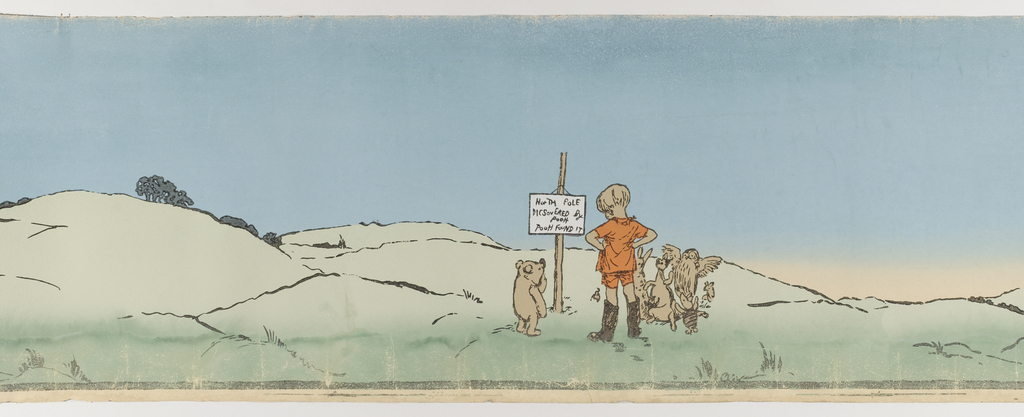This children’s frieze captures the adventures of Winnie the Pooh and Christopher Robin. This is a woodblock print and was probably produced at the same time as the book, which was written by A.A. Milne in 1926 and illustrated by E.H. Shepard. The frieze contains all of the original illustrations from the chapter on Christopher Robin’s Expotition to the North Pole. The illustrations are lined up along the length of the frieze, softly colored, and joined together by an idyllic landscape. This frieze is 40 ft long with no repeat. Allowing for windows and doors, that would be long enough to wrap around a room without duplicating a scene. This is significant as most wallpapers for children were machine-printed and the scenes repeated every 18 inches. Friezes were normally hung at the top of the wall, but for children it was recommended to hang them above the chair rail to make them more accessible. Wallpapers designed for children first appeared in the 1870s, and probably not by coincidence, this is when the first wipeable papers were developed. Many of the early children’s wallpaper designers were already known to children and adults through the popularity of their children’s book illustrations. In the late 19th –early 20th century many well-known illustrators and artists, including Walter Crane, Kate Greenaway, & Cecil Aldin, were commissioned to design children’s papers, and the early 20th century was the heyday of children’s wallpaper design. The purpose of decorating a room with children’s paper was to identify the room as belonging to a child. It gave the child a place of his own, with the furnishings and décor sized to suit his needs. This trend all but ended with the depression in 1929. From then on, parents and decorators designed rooms that could grow with the child, and used simple stripe and plaid papers on the wall. The elements that defined the room as a child’s were relegated to pictures and accessories, which could be easily and cheaply replaced as the child grew.
January 18 is Winnie the Pooh Day.
